(If this is the first you’ve heard of the Grotto Snowflake story, then you should first read these three previous blog posts in order: 1.That Remarkable Photo from the Grotto at Notre Dame; 2. Student Praying Has Come Forward; 3. New and Unexpected Twists)
When I first posted the Grotto Snowflake photo this past December, it was late at night and I didn’t think much of it. It was only when I woke up the next morning that I fully realized that there was something very special about this photo. After thousands of social media shares in the following 48 hours, it was clear to me that I needed to quietly ponder and pray more about it. So I did. A couple days later, while I was in the midst of receiving dozens of messages from viewers from around the world, I thought that it would be good for me to find an image of Our Lady that looked similar to the image formed by the snowflake. I probably spent a good 60-90 minutes Googling fruitlessly, frustrated because the snowflake image seemed clear, almost familiar. Yet I still couldn’t find a good match.
Then someone in Columbus, Ohio, sent me a digital copy of a painting called ““Ave Maria”.” The image bears a striking resemblance to what thousands of people see in the snowflake. In fact, the image is such a close copy that as I showed family and friends the “Ave Maria” painting, many asked me if I had commissioned an artist to replicate the exact image in the photo. Of course, the answer was no, I did not. I didn’t even know who the artist was. This image is astounding in that it parallels the snowflake image so closely that it draws people back to the side by side comparison over and over and over. My astonishment at the similarities lasted for days, and even now it is something that is hard for me to get my mind around.
I began to look for the artist’s name so I could contact him or her. It was difficult to find. Although over 200,000 copies of ““Ave Maria”” have been made and distributed, the artist did not sign the painting on the front, so the signature is not readily available. As I searched, I was mentally preparing myself for the worst. Perhaps I would find the artist and it would be a disappointment. Or perhaps I would hate all of his or her other artwork. But something told me that I must try and I spent quite a bit of time looking.
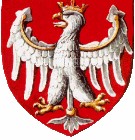
Finally I came across someone who had a prayer card with a name on it: Henryka Ternier. Such an interesting name! It looked like an Eastern European first name combined with some kind of French based surname. I must admit that it still wasn’t clear to me if the artist was male or female or even lived in the United States. Was it a feminized version of Henry? Or is Henry an Anglicized male version of Henryka? I had to make Google translate a Polish webpage to learn that in Polish it is the female equivalent of Henry. So, I finally knew the artist was a female! But even after all this, it was still quite a bit of work to figure out who she was, where she lived, and how to contact her. After some more digging, I finally did. It turns out she and her family immigrated from Poland 50 years ago, and she currently lives in Kalamazoo Michigan.
Kalamazoo? That’s not too far away from Notre Dame! In fact, when I saw Kalamazoo, it triggered my memory of something I had read about the early days of the Grotto:
“Just behind the presbytery is a little wooded dell which has always been regarded as one of the charming spots of Notre Dame. For years past the pilgrims from Kalamazoo and Jackson have chosen it as a resting place after their long journey; it has been a favorite walk with visitors at all times; and during the spring and autumn those who live at Notre Dame seek it instinctively for its coolness and attractiveness. It is where the [new] Grotto has been built.” – Notre Dame’s Scholastic Magazine, 1896
I was determined to meet her so I sent an email and waited. A few days later, she responded. I happened to have business to conduct with the Diocese of Lansing, Michigan the following week. It would be the perfect time for me to drive through Kalamazoo on my way home. We set up a meeting at a Panera’s.
What I learned at that meeting makes this story even more incredible. Henryka is not an artist at all. Before she painted ““Ave Maria”” she had never painted anything before. She didn’t know how to paint. In fact, since ““Ave Maria””, she has only painted one other thing: a simple giraffe for her grandchild. That’s it.

Henryka is a person who is easy to like. She has a gentle and motherly way about her. Her Polish-ness reminds me of my own Polish godmother. In 1987, she lost her 13 year old son, Alan. She didn’t tell me what happened and it seems like something she does not wish to discuss. But in the aftermath of this tragedy, she turned to Our Lady for consolation. For the next eleven years, she had an image of Our Lady stuck in her head. She tried, unsuccessfully, to commission several different artists to paint this image, however something always seemed to happen and it never got off the ground. Finally, in September 1997, after another artist backed out of the project, she was given the grace to be the instrument/artist for the image.
That was the day she went down to the art supply store and bought paints and canvass. She had no idea what she was doing. Thus, she began. She worked and worked and worked on this painting, almost obsessively. While she worked, she felt the presence of two spiritual figures. To her, they seemed more like imaginary friends and companions. She envisioned them as some kind of Renaissance artists who guided and supported her through the four- month processes it took to finish.
After several hundred hours of slow and tedious work, the turning point came when Henryka discovered that a household cleaner she used to clean her floors could be used as a paint eraser when she made a mistake. It worked perfectly and allowed her to make much better progress. Amazingly, when she visited her art store, nobody – not even the veteran artists – knew about this cleaner and its ability to erase mistakes so easily. After at least 650 hours of painstaking work, Henryka got to a point where she suddenly knew she was done. It was at this point that her spiritual companions disappeared and never came back.
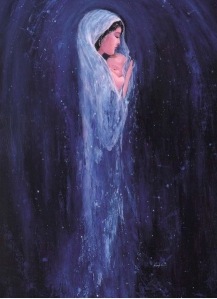 “Ave Maria” turned out so well that it has been made into posters, holy cards and bookmarks. There are now over 220,000 such copies in circulation. Henryka says that over the years she has received tremendously positive feedback and has even taken the painting on tour. The image has been known to evoke great emotion from many people. It has even called some back to God. Encouraged by the powerful beauty and sentiment of all this, she has dedicated much of the past 19 years to spreading the love and consolation of Our Lady to the world by means of this painting, even taking out a personal loan to make more copies available for distribution.
“Ave Maria” turned out so well that it has been made into posters, holy cards and bookmarks. There are now over 220,000 such copies in circulation. Henryka says that over the years she has received tremendously positive feedback and has even taken the painting on tour. The image has been known to evoke great emotion from many people. It has even called some back to God. Encouraged by the powerful beauty and sentiment of all this, she has dedicated much of the past 19 years to spreading the love and consolation of Our Lady to the world by means of this painting, even taking out a personal loan to make more copies available for distribution.
When Henryka saw the side by side image of the Grotto photo next to her painting, she wept. There is a strong connection between the two and it was overwhelming for her to see it so clearly. She is currently looking to find the final resting place for her painting. We both believe that the best and most natural location would be someplace close to the Grotto at Notre Dame. I told her that I would help her find the right place and assured her that Our Lady would somehow take care of this. Henryka has not been to Notre Dame in many years, but something tells me that she will be visiting soon.
![IMG_3650[1].JPG](https://sideofthehouse.files.wordpress.com/2017/04/img_36501.jpg?w=736)
To be continued…
Part 5: Upcoming Opportunities to hear more

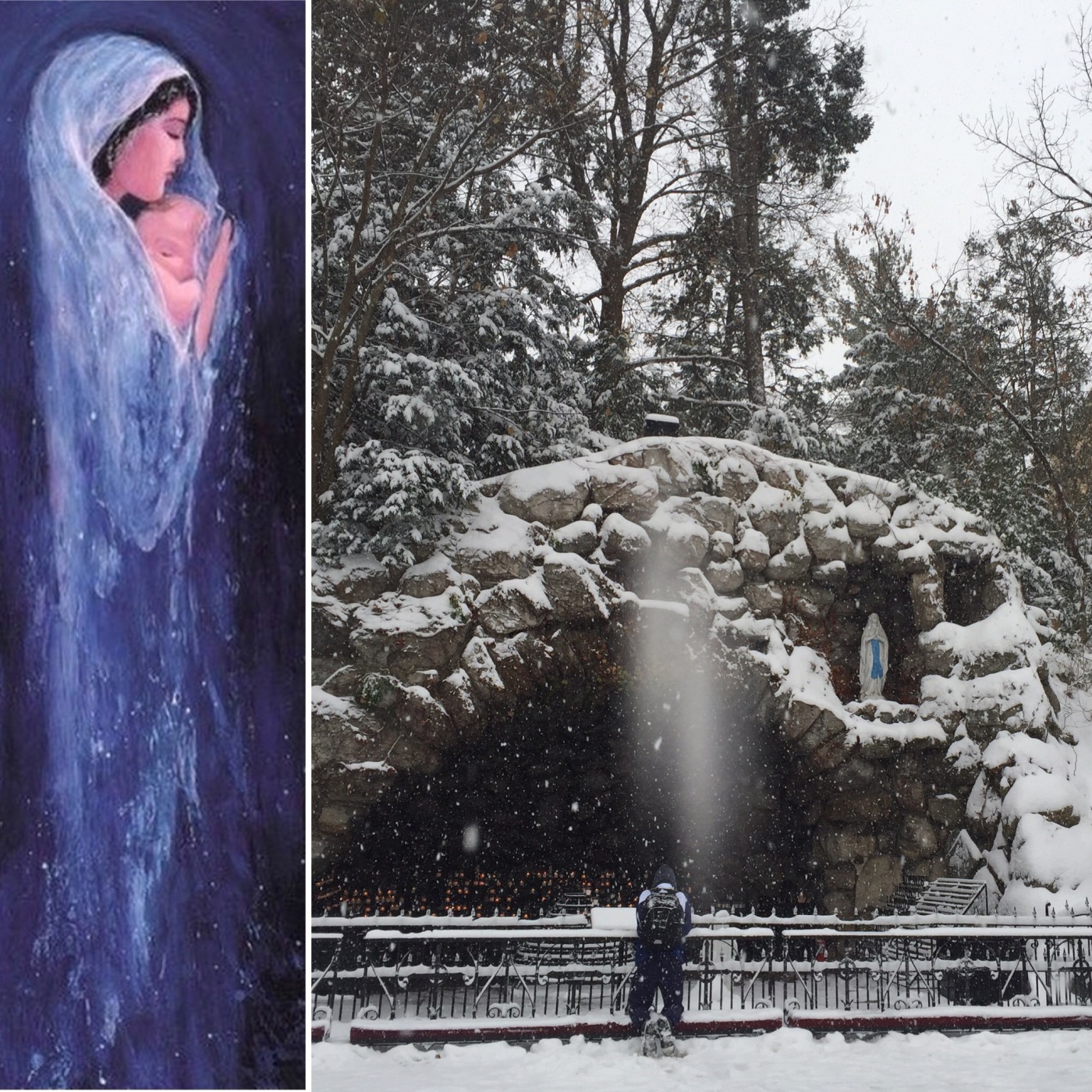
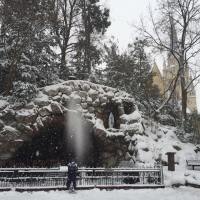

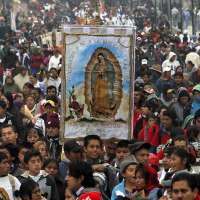
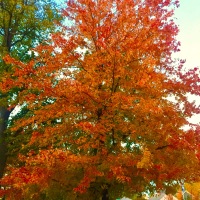
March 25, 2021 at 10:55 am
I cried throughout the story and would love to purchase a copy. I was born on our Blessed Mother’s Immaculate Conception feast day (December 8th). She brings much joy, love and calm to my life. Please let me know how I can buy one.
LikeLike
August 14, 2018 at 9:55 am
Father, can you please send me the number of prints you want and your full mailing address. rlkloska@gmail Thanks!
LikeLike
August 11, 2018 at 1:33 pm
Hi Fr Colum, I will alert Henryka to your interest. She can provide one for you. Thanks for your interest in Our Lady!
LikeLike
August 11, 2018 at 1:30 pm
Hi there Henryka and Robert,
It was your terrific painting of Our Lady that caught my attention. I’v read your blog and I’m again encouraged. I’ve gone unendingly through Pinterest but I can’t find one of these pictures for sale. Where can I get one?
Best wishes and blessings,
Fr. Colum Curran, PE.
LikeLike
April 8, 2017 at 1:31 pm
Beautiful, and very comforting.
LikeLike
April 8, 2017 at 11:02 am
+Bob, Did you get the email that I sent to you about the possible explanation of the dedication of the Grotto on the feast of Our Lady of the Snows? I’ll resend, in case it got lost, as my emails tend to do these days! Please know that Preca Cottage is ready to welcome you, when/if you need a time to meet there. It looks like I’ll probably be the administrator of the Preca Cottage for another year, so am already planning for the Fall. I don’t yet know when the Members are coming this Summer; I’ll keep you posted. A blessed Easter to you and your family. God be with you! Ruth
Ruth D. Lasseter128 S. Coquillard St. South Bend IN 46617 574-904-2925rdlasseter@yahoo.com
From: Thoughts from the Side of the House… To: rdlasseter@yahoo.com Sent: Friday, April 7, 2017 5:08 PM Subject: [New post] The Notre Dame Grotto Snowflake Photo: Another Huge Surprise #yiv0122174984 a:hover {color:red;}#yiv0122174984 a {text-decoration:none;color:#0088cc;}#yiv0122174984 a.yiv0122174984primaryactionlink:link, #yiv0122174984 a.yiv0122174984primaryactionlink:visited {background-color:#2585B2;color:#fff;}#yiv0122174984 a.yiv0122174984primaryactionlink:hover, #yiv0122174984 a.yiv0122174984primaryactionlink:active {background-color:#11729E;color:#fff;}#yiv0122174984 WordPress.com | The Side of the House posted: “(If this is the first you’ve heard of the Grotto Snowflake story, then you should first read these three previous blog posts in order: 1.That Remarkable Photo from the Grotto at Notre Dame; 2. Student Praying Has Come Forward; 3. New and Unexpected Twists” | |
LikeLike